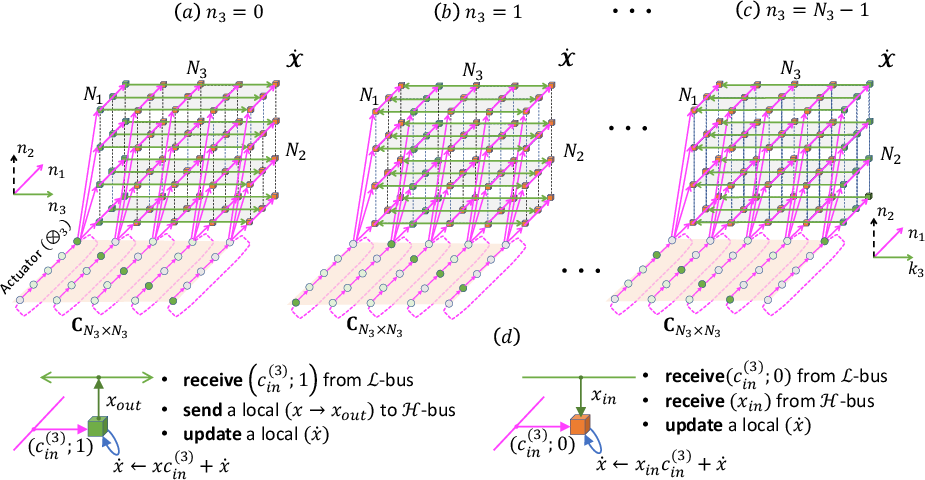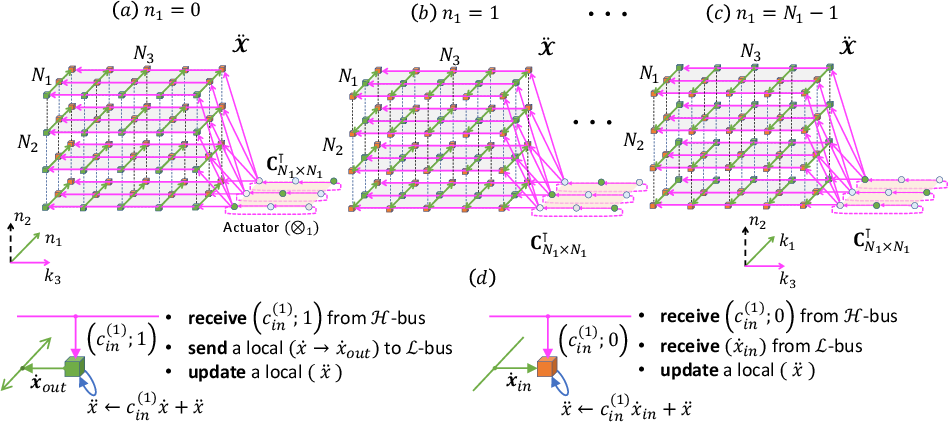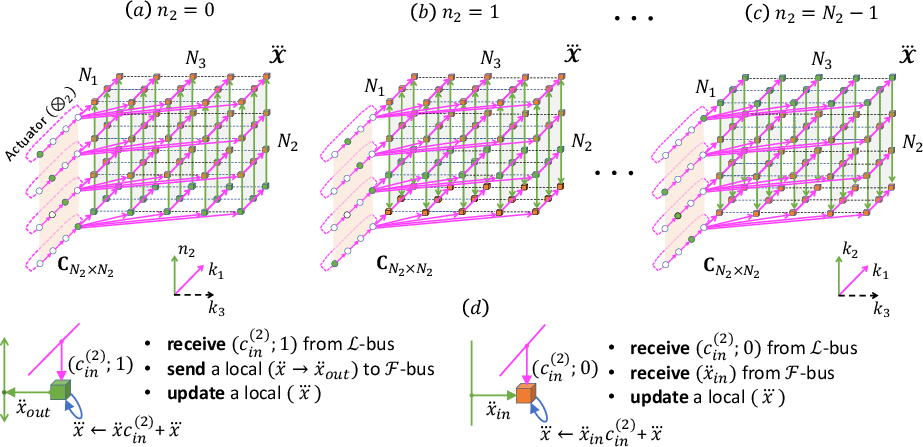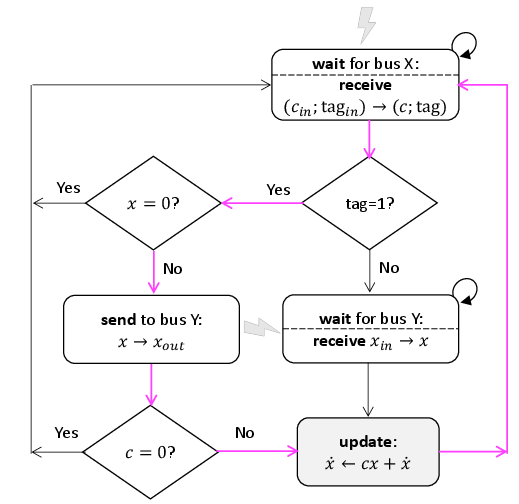- The paper introduces a novel trilinear matrix-by-tensor multiply-add algorithm that significantly enhances computational efficiency for 3D discrete transformations.
- It outlines a unified 3D network architecture with three processing stages that optimizes tensor partitioning and data movement for improved performance.
- The approach integrates an Elastic Sparse Outer-product Processing method to manage data sparsity, reducing redundant computations and conserving energy.
Introduction
The paper presents the TriADA approach, which encompasses both a trilinear algorithm and its isomorphic device architecture. These innovations aim to enhance the computation of multilinear transformations—specifically focusing on trilinear (3D) discrete orthogonal transformations—critical for HPC and AI workloads.
Multilinear transformations, particularly those using tensors, are essential in computational fields such as signal processing and AI. However, these operations face challenges in computational and memory demands that scale non-linearly with dimensionality. TriADA addresses these challenges by introducing a massively parallel low-rank algorithm for efficient computation of trilinear transformations mapped onto a unified 3D network of processing elements, interconnected by mesh networks, thereby supporting both computational acceleration and energy efficiency.
Basic Equations
The essence of the trilinear orthogonal transformation, expressed as both forward and inverse operations, is grounded in matrix-by-tensor multiplication. This computation changes the coordinates of a 3D data tensor using orthogonal matrices. The algorithm described transforms the data coordinates efficiently through a structured sequence of summations detailed in the equations.
Types and Complexity
Several types of trilinear orthogonal transformations (e.g., DFT, DCT, DWHT) rely on specific coefficient matrices that may be symmetric, orthogonal, or unitary. Each type has inherent mathematical properties offering different computational benefits, which are described using the appropriate mathematical constructs. Notably, these transformations can achieve highly efficient computation expressed in the form of matrix-by-tensor multiplications, without necessitating data to be organized in a square shape or restricted to power-of-two sizes.
Tensor Partition and GEMT Multiplication
Partition Schemes
The multidimensional tensor can be partitioned along different planes to facilitate GEMT computations. This partitioning reduces computational complexity by decreasing the dimensionality of the iteration space, transforming what would otherwise be a monolithic 6D space into multiple manageable 4D spaces.
Outer-product Notation
Transformations can be processed using dot-product notation or more efficiently via outer-product notation, which aggregates operations and allows for a linear number of time steps in computation—key to efficient tensor transformations in TriADA.
Mapping Algorithm's Index Space to Processor Space
Linear Mapping
The spatial mapping technique, crucial for reducing computational complexity, enables mapping from a higher-dimensional algorithm space to a lower-dimensional processing space, ensuring structured overlapping and data reuse through strategic time-step assignments. This methodology ensures processing within TriADA accommodates different index spaces of the algorithm without conflict.
New Kernel Design
TriADA introduces a unique kernel tailored for outer-product-based processing, capable of efficiently handling square-by-rectangular matrix multiplications crucial for transforming both tensor and matrix data stored within its tensor core network.
Stage-based Acceleration
Stage I
The initial stage performs rank-1 updates using outer-product arithmetic, leveraging diagonal tagging to independently activate cells for computation, driven entirely by the input data.

Figure 1: Stage I: computing and data movement on each time-step n3∈[0,N3), where cin(3) is a corresponding element.
Stage II
In the second stage, the dimensionality shifts to focus on row-based data streaming and matrix updates accomplished through lateral data movement.

Figure 2: Stage II: computing and data movement on each of N1 time-steps.
Stage III
The final stage completes the trilinear transformation with frontal streaming of residual data, achieving full tensor transformation through sequential yet parallel operations.

Figure 3: Stage III: computing and data movement on each of N2 steps.
Management of Unstructured Data Sparsity
ESOP Method
The Elastic Sparse Outer-product Processing (ESOP) method enhances performance by efficiently handling sparse data, minimizing computational and communication redundancies. It employs a mechanism that dynamically adapts to sparse vectors, optimizing update frequencies and conserving energy.

Figure 4: Diagram of cell's activity to manage data sparsity.
Conclusion
TriADA's unique blend of algorithmic and architectural innovations positions it as a tool to fundamentally enhance tensor transformation capabilities for AI and HPC workloads, balancing energy efficiency with computational power. Through its scalable approach, TriADA anticipates future computing demands within high-performance sectors, enabling significant advancements in tensor operation efficiency.
The implications of TriADA touch on various domains, specifically where tensor operations are central, contributing to ongoing developments in AI and HPC infrastructure. Future work might explore further optimizing operations for emerging transistor technologies or adapting the architecture to newer application-specific processors.



